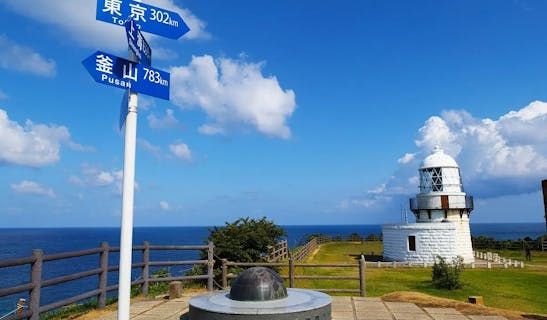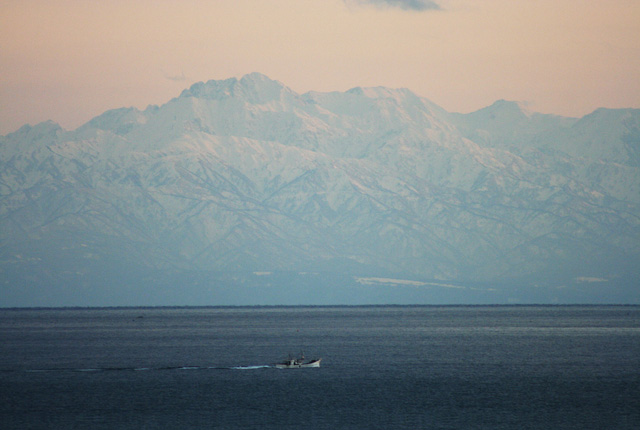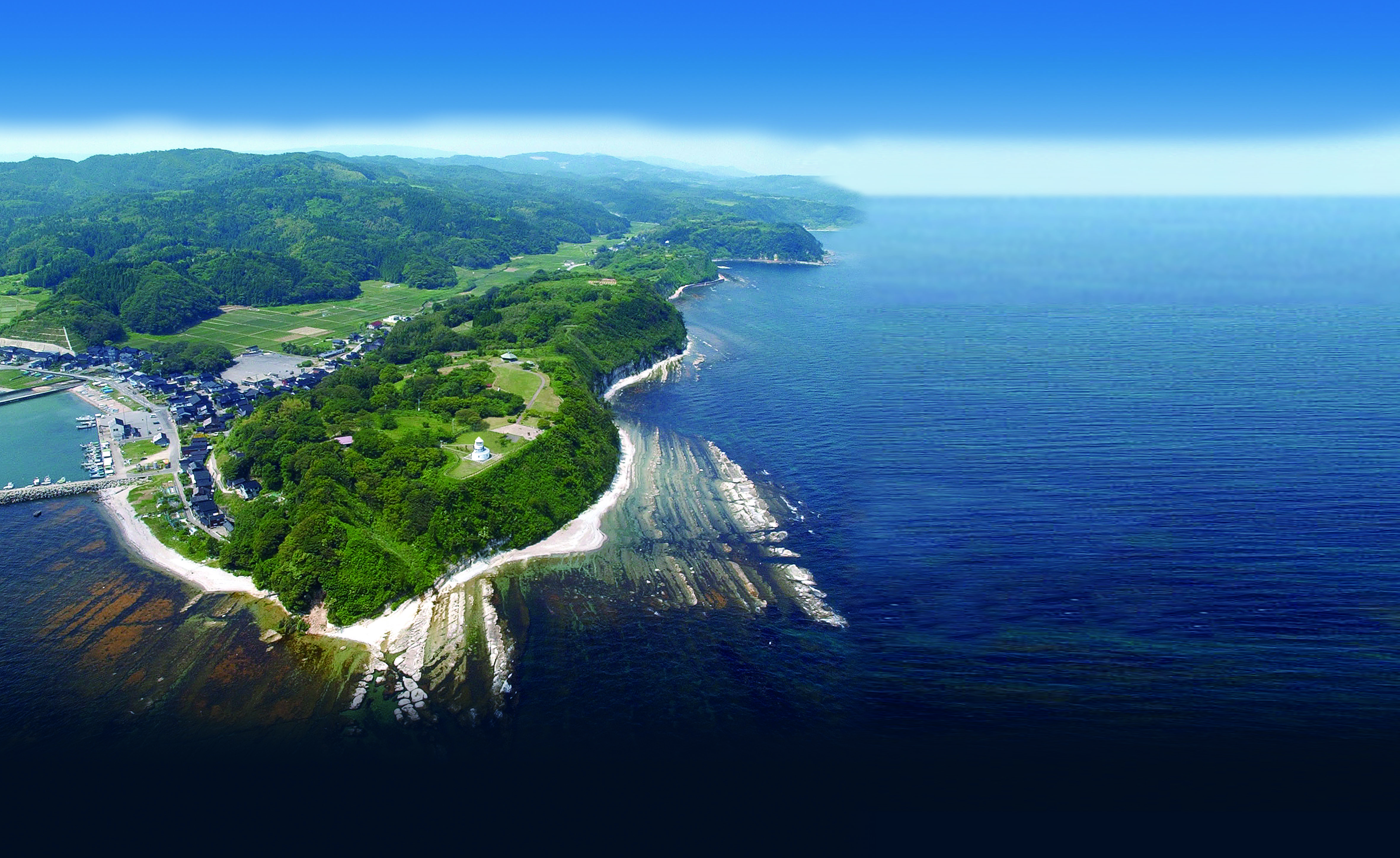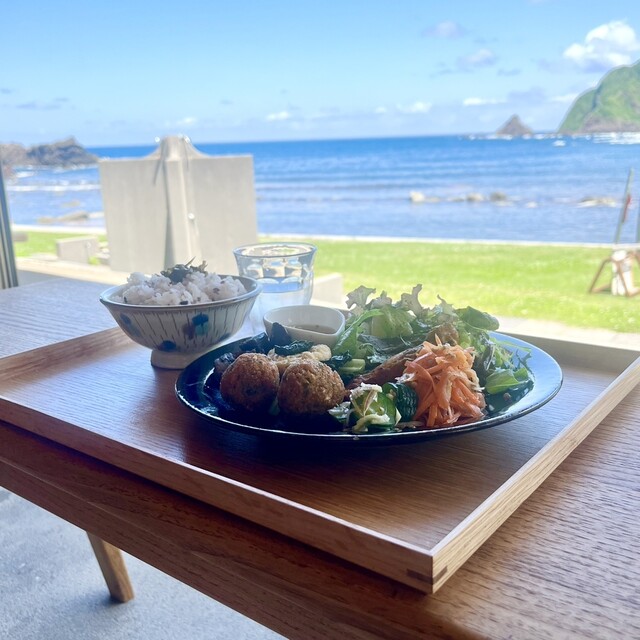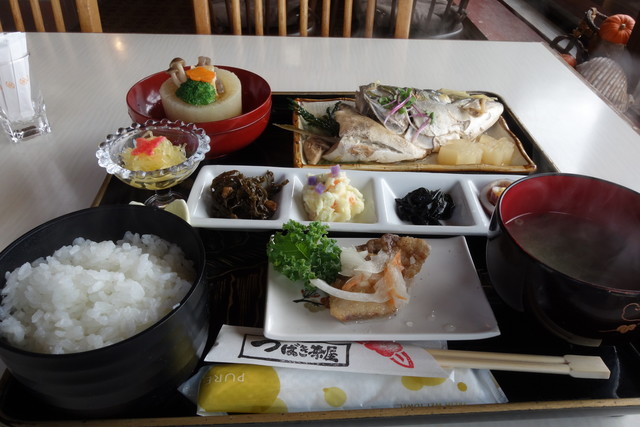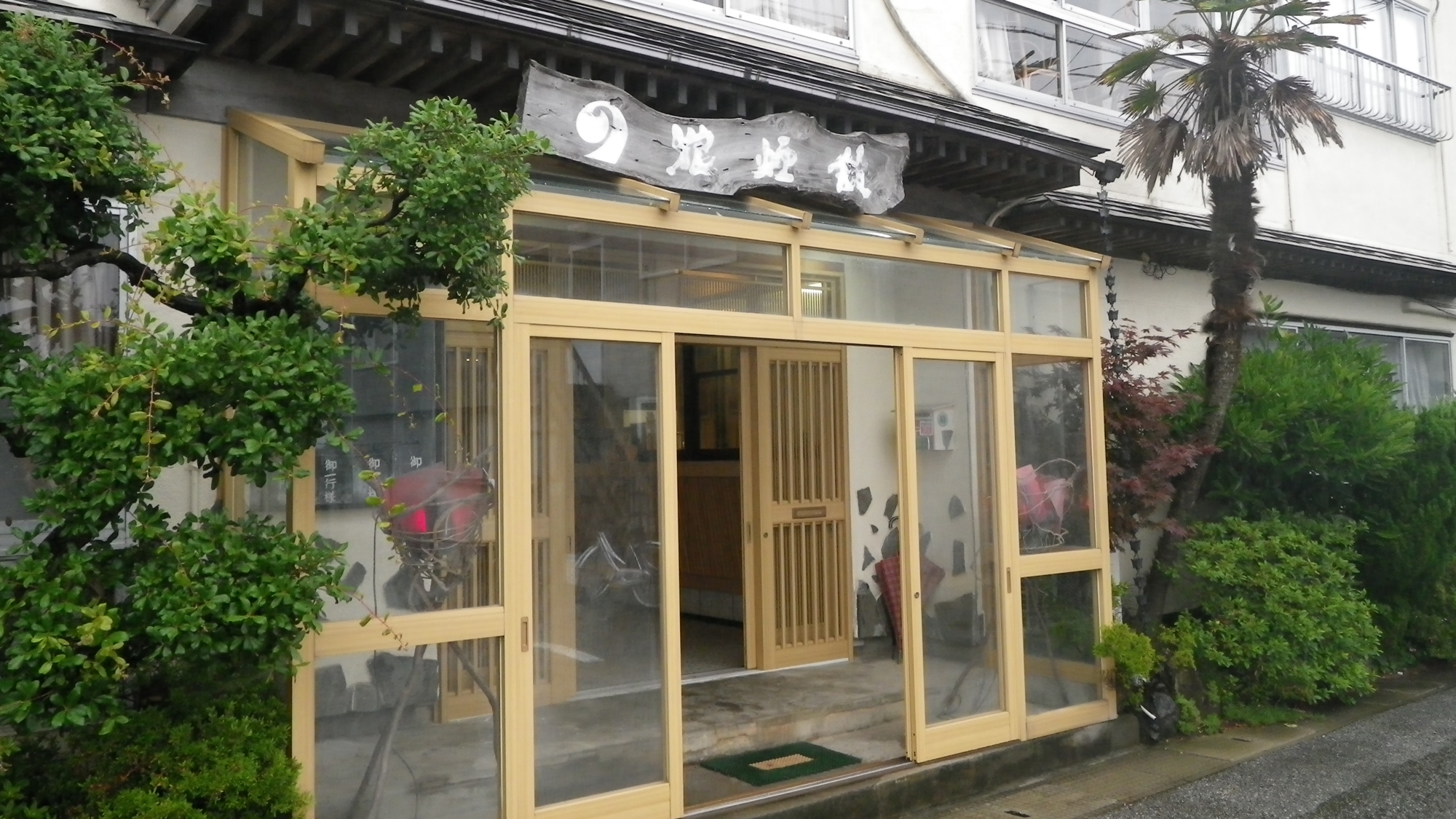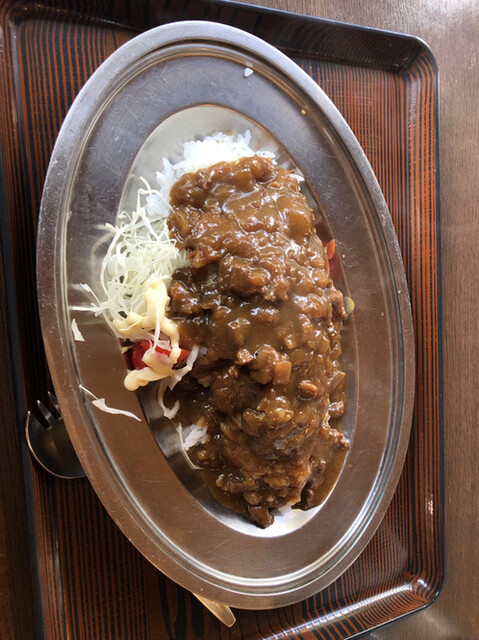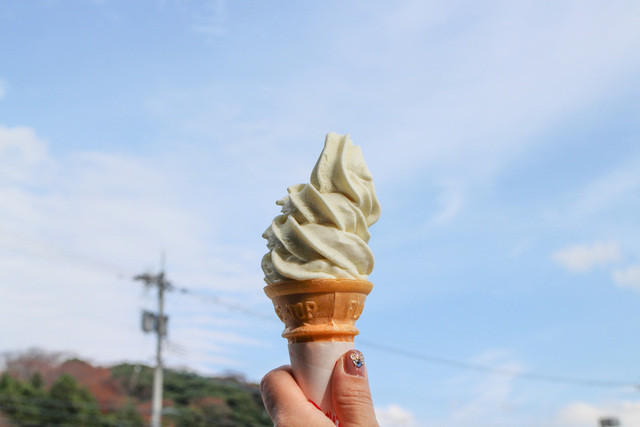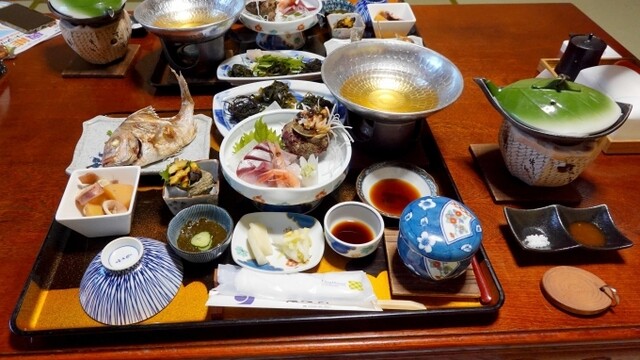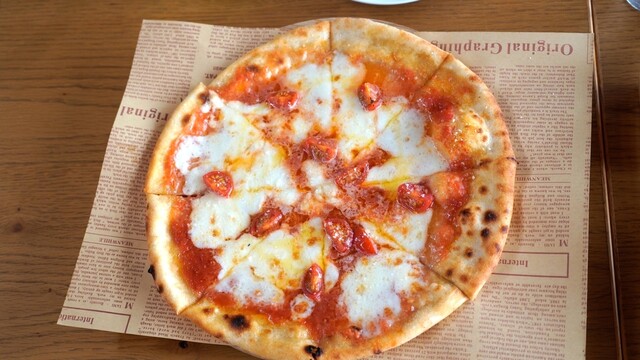The Rokugouzaki Lighthouse on the Noto Peninsula is located on a cliff-lined coastline, offering magnificent natural beauty. On days when the sea breeze is strong, you can see powerful waves crashing against the rocks. From the lighthouse, you can enjoy a 360-degree view, and on clear days, you can even see the Tateyama mountain range and Sado Island in the distance. The renowned haiku poet, Yamaguchi Seishi, was captivated by the stunning natural beauty and wrote, "The sound of the evening cicadas echoes in the deep mountains of Noto." The monument with his poem still stands at Rokugouzaki today.
Rokugosaki Lighthouse
石川県
4.3
Asahi and Yuhhi can be seen at the edge of the Noto Peninsula.
The Rokugosaki Lighthouse is located at the tip of the Noto Peninsula. Since its first lighting in 1883, it has continued to shine on the nearby waters, which were once the site of many maritime accidents. It is famous for being located at the exact point where the outer and inner bays meet, allowing visitors to see the "sunrise from the sea and sunset sinking into the sea" from the same spot.
Features & How to Enjoy
Highlights
Point 1
Panoramic View of the Tateyama Mountain Range and Sado Island
Point 2
View the Sunrise and Sunset in the Same Location!

Located at the northernmost tip of the Noto Peninsula, the Rokugouzaki Lighthouse is known as one of the best scenic spots on the Japan Sea side, where you can view the sunrise and sunset in the same location. On clear days, the white lighthouse standing against the backdrop of a clear blue sky is a popular photo spot, but the real charm lies in the beautiful time of the sunrise and sunset. Of course, the times of sunrise and sunset vary depending on the season, so if you don't want to miss your chance to take a photo, it's a good idea to check the expected times in advance. As the most powerful spot in Noto, the divinity of the sunrise is indescribable, and you can feel all kinds of power filling you up. In the evening, you will be captivated by the competition between the changing colors of the sun and the sea.
Point 3
The Attraction of Roughness! The Unique Scenery of Senjojiki, a Sea Erosion Platform

The Rokugou Cape Lighthouse, located on a cliff, is over 40 meters high from the sea below, and there is a rocky area called Senjojiki that spreads out. This rocky area appears at low tide and sinks into the sea at high tide. If you visit during low tide when the surface is visible, you can see a wide area of rocks that have been flattened by erosion. The rough and uneven rocks seem to embody the roughness of the Noto Peninsula.
Point 4
One of Japan's Top 500 Walking Paths
The area around Rokugosaki and Rokugosaki Lighthouse has been selected as one of "Japan's Top 500 Walking Paths That Make You Want to Walk". It's an ideal place for hiking and trekking. A promenade named "Cape Promenade" has been developed, where you can walk while looking at the Sea of Japan from the lighthouse. The route starts from Takaya-cho in Suzu City, passes through Kinoura and Orido, and continues to Noroshi for a total distance of about 10.7 km. It takes about three hours to walk the entire route. It's also nice to take a leisurely stroll while enjoying the scenery.
Point 5
Base for Sightseeing in Oku-Noto
Rokugosaki, also known as "the snow shelter of Oku-Noto," is located along the national highway that surrounds the peninsula's coastline, making it one of the bases for sightseeing. From the direction of Wajima City, you can visit Mitsukejima Island in Anamizu-cho and Koiro Coast. From Anamizu-cho, head towards Wajima City and visit tourist spots such as the World Agricultural Heritage Site, Shirakami Senmaida, and the Wajima morning market, which is famous for its local specialties. Please enjoy the charm of Oku-Noto efficiently by touring around in a circle.
Point 6
Unusual Sign in the Center of Japan?

At the base of the lighthouse, there is a stone monument engraved with the words "Here is the center of the Japanese archipelago." While it may seem lacking in evidence to claim that this is the center of Japan, it is actually the official "center of Japan" recognized by the Geospatial Information Authority of Japan. The correct location is actually far out in the Japan Sea (specifically off the coast of Toyama Prefecture), but the closest land to that point is Rokkozaki. There is also another famous feature: a signpost that shows the distance from Rokkozaki to Tokyo, Shanghai, Busan, and Vladivostok. Of course, you can't reach those places from this spot by plane or boat, but it's a signpost with a deep and unique flavor that allows you to feel the air of a foreign country across the distant sea.
Access
Lukkogasaki Lighthouse: A Representative Spot of the Noto Peninsula
Lukkogasaki Lighthouse, located in the deepest part of the Noto Peninsula, is not easily accessible even for locals in Ishikawa prefecture. However, it's worth the trip as it's one of the representative spots of the Noto Peninsula, so we hope you'll include it in your sightseeing route. By car, the nearest roadside station can be accessed in about 140 minutes from JR Kanazawa Station or about 60 minutes from the Noto Satoyama Airport. If you're taking the train, you can take the JR Nanao Line from Kanazawa Station, transfer to the Noto Railway at the final stop, Nanao Station, and get off at Anamizu Station for about 2 hours and 30 minutes and 2,130 yen. By using the express bus from Kanazawa, you can go to Suzunari-kan Mae up to 4 times a day from the west exit of Kanazawa Station, and it takes about 4 hours and 10 minutes and 3,500 yen, which is about 1 hour earlier and about 1,000 yen cheaper than the train route. From Suzunari-kan Mae, take the Hokutetsu Okunoto Bus to Kinoura (via Noroshi) and get off at Noroshi (about 50 minutes). From there, it's about a 10-minute walk to the lighthouse.
Parking
Use the Parking Lot at the Michi-no-Eki
As there is no parking lot at the Rokkozaki Lighthouse itself, you will need to use the parking lot at the "Michi-no-Eki Rokkou" located about 50 meters away from the signal fire bus stop. It's free to use, so please feel free to park with peace of mind. To get to the lighthouse, you will need to walk about 10 minutes from here. Although this Michi-no-Eki is not very large, the parking lot is spacious and there is enough space to park your car.
History

A Still-Active Lighthouse with Historical Value
The Rokkou Cape Lighthouse was built in 1883 and has been designated as an A-rank preserved lighthouse due to its high historical and cultural value. It has also been selected as one of "Japan's Top 50 Lighthouses." The beautiful white tower-shaped (circular) stone lighthouse stands at a height of approximately 12 meters. It is also known as the "signal fire lighthouse" due to the name of the town where it is located. While most lighthouses flash their lights by rotating the lens, this lighthouse has a unique structure where the lens is fixed and the light-blocking plate (shade plate) is rotated to create the flashing effect.
Basic Information
| Address | I, Wolf Smoke Town, Suzu City, Ishikawa Prefecture 927-1441. | ||
| Business Hours | N/A | ||
| TEL | 0768-82-7776 | ||
| Web Site | https://www.hot-ishikawa.jp/spot/6182 |
Recommended Spots
能登の代表的パワースポット
オーシャンビューの絶景カフェ
日本の原風景を見に行く
能登の美味しいものが集まる市場
知る人ぞ知る定食屋
Explore the City
